By Grant Matla
It was a battle fought without armies. No rifles, no tanks, no barbed wire. In the summer of 1940, the skies above Britain served as the battlefield for the British Royal Air Force and the German Luftwaffe. The Nazis had conquered most of Western Europe, and Britain stood alone. The Luftwaffe represented the first arm of the German military juggernaut to take a swing at the British Isles. Its mission was simple: repeat the performances in Poland and France and eliminate the enemy air force.
This would facilitate an invasion, which the Germans had no reason to believe would fail. The Luftwaffe’s crack pilots, many of them experienced since 1936 in the Spanish Civil War, included men like the dashing and headstrong Adolf Galland and deadly tactical genius Werner Mölders. The RAF stood grossly outnumbered, outgunned, and outmanned. Therein lies the importance of the Battle of Britain. The RAF, subsequently nicknamed “The Few” by Prime Minister Winston Churchill, held the responsibility of not only defending Britain from the Luftwaffe but also defeating the German pilots and thwarting Hitler’s plan for invasion. Despite German numerical and tactical superiority, higher echelons of leadership in the RAF proved more strategically flexible and adapted to the situations and parameters of the battle better than their Luftwaffe counterparts.
“The Battle of Britain is About to Begin”
By the spring of 1940, World War II had begun only months earlier but looked to possibly end within the year. The French defense against the Germans ranged from abysmal to nonexistent, and the British Expeditionary Force evacuated Dunkirk in mid-June, as French Marshal Philippe Pétain sought an armistice with Germany. Resiliently, Churchill declared to Parliament on June 18, “The Battle of France is over. I expect the Battle of Britain is about to begin.”
With France removed from the picture, Germany looked to attack Britain, the last bastion of resistance. In preparation for a decisive victory, Hitler issued Directive Number 16, which charged Luftwaffe chief Hermann Göring with the task of softening up Britain. Arrogant and pompous, Göring guaranteed the destruction of the RAF. Göring fully expected the RAF to flounder and fall from the sky.
Göring had little reason to assume the RAF could withstand a full-force assault. During the battles over France and Norway, the RAF lost 1,020 planes, 509 of which were fighters. According to the battle order of the RAF on July 1, 1940, this left 900 fighters in 10, 11, 12, and 13 Groups, responsible for the defense of England. Of these, 151 (17 percent) were Bristol Blenheims and Boulton Paul Defiants, although the majority of the squadrons were equipped with Hawker Hurricanes, and to a lesser extent, the Supermarine Spitfire. To add to these numbers, fighter production in June of 1940 was 446. The count of Hurricanes and Spitfires would increase to 972 in July and August.
Pilots of the RAF
In terms of pilots, the RAF faced a bleak situation. Planes were available, but pilots were not. Since 1939, the British had produced only 200 new pilots every month. Those men were not likely to be considered veterans, since the only combat they had encountered was over France and Norway. In all, Fighter Command could muster 591 serviceable (combat ready) fighters and 1,200 pilots. As optimistic as these figures were, one must remember that several squadrons would be rotated out for rest if the head of Fighter Command, Air Chief Marshal Hugh Dowding, could spare them. This was not often, as the pressure from the Germans forced all available aircraft to remain at the ready.
It was more likely that individual pilots were sent for rest when they reached the limits of their nerves, suffering from exhaustion. This was done on an individual basis since the stress of combat affected each man differently.
RAF pilots came from a few different strands before they manned a squadron. Pilots were schooled at Cranwell, which was the pinnacle of British flight schools. Also, Halton trained those who were of a social position that was not high enough for Cranwell. Halton specialized in ground crew rather than pilots. Short service commissions were another option, with the promise of an officer’s rank for six years followed by four in the reserve, with all the accoutrements such a position carried. This method proved very popular, offering instant social advancement in the stratified English society.
The final method of induction into an RAF squadron was through the Auxiliary Air Force. The AAF began in the mid-1920s as a grouping of clubs for amateur flyers, intended to create a local identity in a social class. As the 1920s and 1930s progressed, these grew in number and were funded by the Air Ministry. By 1940, AAF squadrons made up one-quarter of Fighter Command’s frontline strength, while those pilots with public school educations accounted for only 200 of the 3,000 pilots who would fly for the RAF in the Battle of Britain. The working class men accepting short-service commissions, which bypassed training at Cranwell, made up the majority of the pilots in 1940.
The RAF’s Many Fighters
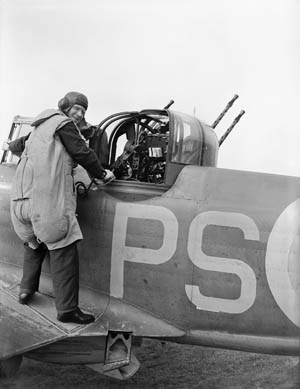
base at Kirton-in-Lindsey, Lincolnshire, a gunner of No. 264 Squadron, RAF, smiles confidently over his shoulder. The Defiant was obsolete by the time this photo was taken in August 1940.
The pilots coming into the RAF looking to find themselves in the romantic role of a fighter pilot in 1940 flew a mixed bag of fighter planes. The oldest type was the Bristol Blenheim. A prewar design, the Blenheim was a twin-engine craft converted from reconnaissance to a night fighter/fighter-bomber. The plane had a top speed of 260 mph and carried either two or four machine guns, depending on design variant and role, and up to 1,000 pounds of bombs.
The Boulton Paul Defiant first appeared in May 1940. Its top speed was 303 mph, and its four machine guns were located in a manned turret immediately aft of the cockpit. This arrangement made it impossible to attack a target in front of the aircraft, as it had no fixed forward firing armament. The turret had been placed in a defensive position.
The most numerous fighter on the RAF airfields was the Hawker Hurricane Mk. I. The Hurricane was a fast fighter at 320 mph. It climbed beautifully (2,520 ft/min) and was a stable gun platform for the eight .303-caliber Browning machine guns in the wings. However, the most modern fighter in the British arsenal was the Supermarine Spitfire Mk. I. The beautifully aerodynamic “Spit” could reach 355 mph and held eight .303 Brownings, four in each wing. It could climb slightly faster than the Hurricane, ascending at 2,530 ft/min. Climb was of massive importance to the RAF, as the British had mere minutes to meet each incoming threat. Time was a crucial factor in the battle. The ability to get to fighting altitude (10,000 to 15,000 feet, usually) proved critical, and the aid of radar early warning would prove to be one of the vital British advantages in the battle.
Despite the large number of guns, which had a sustained firing time of 14 seconds for both the Hurricane and the Spitfire and dropped 13 pounds of ordinance in a three-second burst (as opposed to the Bf-109’s 18 pounds), both planes were very maneuverable, with the Spitfire having a slight edge. The Spit was trickier to fly because of a high rate of roll due to its aerodynamics and powerful engine. This gave the plane incredible maneuverability, which would put it on par with the German fighters. This fact determined how the Spitfire was to be deployed during the battle. In July 1940, aircraft available to Fighter Command consisted of 463 Hurricanes, 286 Spitfires, 37 Defiants, and 114 Blenheims.
The Inadequate .303 Round
Across the English Channel from the RAF, the Luftwaffe boasted 2,909 aircraft in Luftflotten 2, 3, and 5. This included 1,260 twin-engine bombers, 316 dive-bombers, 280 twin-engine fighters, 809 single-engine fighters, and 244 various reconnaissance planes. The twin-engine bombers were the Heinkel He-111, the Dornier Do-17, and the Junkers Ju-88. Top speeds of these bombers were 252, 255, and 280 mph, respectively. They were light to medium-sized craft with medium payloads and poor defensive armament, but they proved tricky to shoot down. As for dive-bombers, the Germans employed their notorious Junkers Ju-87 Stuka. Despite success in France and Poland, the Stuka had a top speed of only 238 mph and proved extremely vulnerable to attack if unescorted.
The difficulty in shooting down a German bomber owed to the inadequacy of the .303 round and to the self-sealing fuel tanks found in German aircraft. The self-sealing tanks worked by employing two layers of metal divided by a special rubber compound. When the tank was punctured, the fuel reacted with the rubber, causing the compound to swell and close the hole. This was only a temporary fix, which would allow the plane to return to base without losing appreciable fuel or bursting into flames.
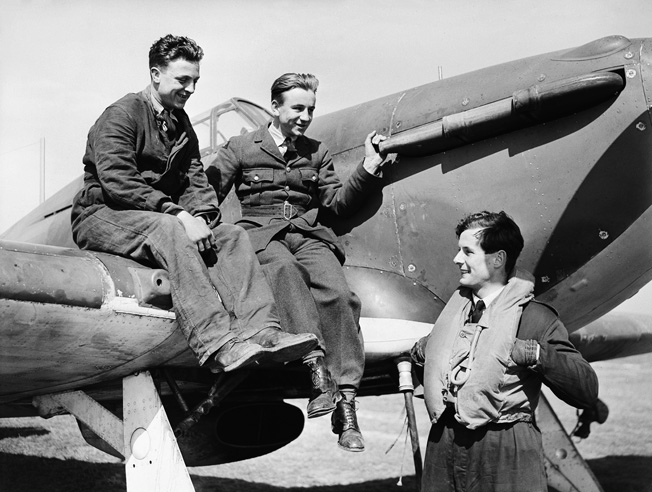
In addition, the .303 round was not heavy, large, or powerful enough when it came to shooting at metal-skinned fighters. It was the same caliber that was used in World War I against planes made of wood and doped linen. During the interwar years, armor was installed in the cockpit, protecting the pilot, and planes were constructed more often of sturdier materials. The small caliber of the bullets decreased the amount of structural damage inflicted on metal skin.
The Germans encountered this same problem with their 7.92mm rounds, and both sides eventually switched to a .50-caliber (German 13mm) machine gun and 20mm or 30mm cannon to inflict greater damage.
Germany’s Messerschmitt Fighters
The Luftwaffe possessed two frontline fighters, the Messerschmitt Bf-109 and Bf-110. On the eve of the Battle of Britain, a mystical aura surrounded the Bf-110. The RAF had yet to see one in combat and had only heard reports of the fast, heavy fighter with massive armament and two engines. Designed by Willy Messerschmitt, the Zerstörer could reach speeds of 336 mph. In the nose, it carried four 7.92mm (.311 caliber) machine guns and two 20mm cannon, with an additional machine gun in the rear of the cockpit to defend the tail.
Destined to become the most produced fighter of all time, the Bf-109’s E variant topped out at 342 mph and carried two 7.92mm machine guns in the nose. In the wings it held two 20mm cannon. These inflicted massive structural damage on metal-skinned fighters and bombers. The 109 was small, maneuverable, and fast. Most importantly, its Daimler-Benz DB 601 engine had fuel injection, which meant the aircraft would not stall in a negative-G maneuver such as a dive or a split-S. This enabled it to outdive any British plane in the sky.
The 109 did not have sufficient range (410 miles) to operate over England for much more than 15 minutes—especially at full throttle as would be the case in combat—so this trait enabled it to retreat effectively in the event a fight would last more than the usual few minutes.
The thin wings of the 109 did not provide as much area for lift, thereby limiting its performance at extremely low altitude, and narrow landing gear resulted in inherently unstable ground characteristics. Many novice pilots would wreck their 109s while landing too fast or unevenly. In fact, Messerschmitt’s prototype crashed in a ground loop during trials in 1936. The pilot, World War I ace Ernst Udet, was unharmed. By 1940, Germany was producing 6,618 aircraft per year, 25 percent of them fighters.
Flying the abundance of planes in the Luftwaffe arsenal were some of the most experienced pilots in the world. In 1936, when men who would fly for the RAF in the Battle of Britain did not even entertain the thought of joining the service, Luftwaffe pilots were dogfighting in Spanish skies. Later, many of these men would be commanders over Poland, France, and Britain, exponentially increasing the skill of the German pilots.
A Battle Determined by Tactics and Leadership
On paper in June 1940, the Battle of Britain looked one-sided. The only advantage apparent to the RAF was the fact that its pilots were defending their homeland. In addition to the motivational aspects of this, it held an advantage in regard to personnel. Pilots in World War II were more likely to survive an encounter than their fathers had been in World War I. Parachutes were now standard equipment as opposed to contraband during the Great War. When RAF pilots bailed out during the Battle of Britain, they could be back at their squadron within a few hours. Luftwaffe pilots, however, became spectators if they “hit the silk” over England, consigned to a POW camp or a long swim back to their airfield.
The Battle of Britain would be decided by tactics and leadership if the British hoped to survive. The men of the RAF knew the Luftwaffe was good. They had proven it over Spain, Poland, and France. Messerschmitt’s fighters carried a daunting reputation, and the Stuka was feared around the world. In contrast, the Luftwaffe viewed the RAF pilots as nascent weekend warriors who lacked the skills to compete with the deadly German aces. This is not to say the Germans did not have any respect for the RAF, as Luftwaffe pilots were intimately familiar with the Spitfire, and held it in the same regard that the RAF held the 109.
“Stuffy” Dowding vs Hermann Göring
Affectionately known as “Stuffy” for his personality and terse demeanor, Dowding was the senior serving officer of the RAF. The outbreak of war postponed his retirement, and the 58-year-old understood technical and logistical matters exceptionally well, which would be illustrated in the upcoming battle. Dowding had led Fighter Command since its inception in 1936. Under his direct command were the group commanders. Air Vice Marshals Richard Saul, Trafford Leigh-Mallory, Keith Park, and Sir Christopher Quintin Brand commanded 13, 12, 11, and 10 Groups, respectively. Of these, 12 Group was responsible for central England while 11 Group covered London and southeastern England. Leigh-Mallory, the senior group commander, was expecting to command 11 Group. Dowding’s appointment of Park to the position was based on the fact that Park was a World War I ace with 20 kills and an expert in fighter tactics and organization. Nevertheless, the slight alienated Leigh-Mallory, who saw himself as relegated to a secondary role.
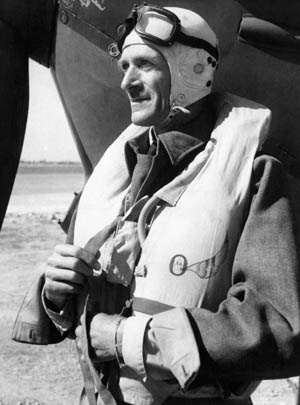
From the outset Trafford Leigh-Mallory and Keith Park did not see eye to eye. Park, who flew his personal Hurricane to check up on his pilots in combat, commanded 22 fighter squadrons over the most important area of the country. Leigh-Mallory was assigned to support Park, and his 14 squadrons would cover 11 Group’s bases when they went up after the German raiders. Because 11 Group’s area was closer to the French coast and held the priority targets, logistics made it more reasonable for Park’s fighters to be the first wave of attackers. Nevertheless, this created animosity among Leigh-Mallory, Park, and Dowding. The approaches each man took to thwart the Luftwaffe would directly affect the outcome of the battle.
Göring, a World War I ace, had become Hitler’s most dedicated sycophant, declaring “If the Führer wants it, two and two make five!” In the early years of the Nazi party, Göring had held several political offices and exhibited great energy and skill in these duties. By the end of the 1930s, he had become addicted to painkillers. He had also become a corpulent Nazi robot, whose ambition led him to greed, complacency, and lavish excess and created a schism between him and his pilots. Once war broke out, Göring was extremely powerful, second only to Hitler in the Nazi hierarchy. But his power and arrogance clouded his judgment.
Göring’s Luftwaffe fielded three air fleets, two in France and one in Norway, in preparation for the attack on Britain. Col. Gen. Hans-Jurgen Stumpff was an old staff officer in command of Luftflotte 5 in Norway. His forces took heavy losses in their only day of fighting during the Battle of Britain on August 15, losing 75 planes out of 258, mostly 110s and bombers—nearly a 30 percent loss rate. As a result, the remainder of Luftflotte 5 would serve as replacements for the men of Luftflotten 2 and 3.
In command of Luftflotte 3 was Field Marshal Hugo Sperrle. He was the most experienced air officer in the Luftwaffe having seen action in World War I and commanded the Condor Legion in Spain. The most influential Luftflotte commander was Field Marshal Albert Kesselring, a former army officer who led Luftflotte 2, which was located in the Dunkirk area and included much of the Luftwaffe fighter strength.
155 Luftwaffe Planes Shot Down in the First Month
As these forces prepared for the coming showdown, it became apparent that the Battle of Britain was going to be unlike any fought before. It was a rarity not only because of the nature of the fighting—air to air—but also in the respect that it had no exact dates. The battle was fought daily (weather permitting), in raid after raid, over several months.
It began in earnest on the afternoon of July 10, 1940, when 20 Do-17s, 30 Bf-110s, and 20 Bf-109s attacked a westbound convoy in the Channel. Thirty British fighters attempted to intercept them. Peter Townsend, commander of 85 Squadron, described this engagement. “Our job was defense. German fighters could do no harm to Britain. German bombers with their deadly loads were the menace. Our orders were to seek them out and destroy them. Only when their Me. 109 [sic] escort interfered did it become a fleeting battle between fighter and fighter. But we tried to avoid them, not to challenge them … Three Hurricanes and four 109s were lost that day … In four patrols I flew for nearly six hours.”
During the remainder of July and into the first two weeks of August, German Do-17s, He-111s, and Ju-87s assaulted shipping and coastal regions of England. Bf-109s ravaged British Hurricanes, while Spitfires fared slightly better. The weaknesses of the Stuka, slow speed and virtual paralysis when coming out of a dive, were taken advantage of by swarms of RAF fighters looking to pounce. As a consolation to the Luftwaffe, Bf-109s exploited the weaknesses of the Defiants, which made easy prey for the nimble and powerful 109.
Two formations of German fighters jumped a flight of nine Defiants on July 19, shooting six down and crippling another before a squadron of Hurricanes interceded. It also became apparent quickly that the Bf-110 could not compete with single-engine fighters. The 110 proved highly vulnerable to Hurricanes and Spitfires, which could easily outmaneuver them. The twin-engine craft simply could not outturn or outrun the Spitfire.
By the end of the month, the RAF had shot down 155 Luftwaffe planes to a loss of 69 fighters. The reason for this disparity is simple. There were more German planes in the air, which gave the RAF more targets to shoot down. Also, the Germans had bombers in the air, and the RAF did not. Bombers were slower, less maneuverable, and did not have adequate defensive armament. The Germans also sank approximately 20 coastal merchant ships and a destroyer.
Finger Four Formation
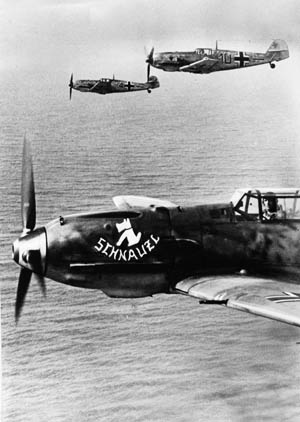
A need for a change in the British fighter tactics was apparent. According to Pilot Officer Harold “Birdy” Bird-Wilson, “Our standard formation was an extremely tight one, which would have been ideal for prewar air shows. Very compact. Very close together. The pilots in formation were looking at each other so as not to collide. We were not looking around as we should have. The Germans, who had learned many flying lessons during the Spanish Civil War, knew better. They flew in much looser formations and were able to pick us off.”
The lessons during the Spanish Civil War were advocated by Mölders, who had shot down 14 planes in Spain. Mölders created, pioneered, and taught the Finger Four formation. This was the “looser formation” described by Bird-Wilson. Finger Four worked by using pairs as the operative tactical groups. There were two pairs (Rotten) to a Schwarm, three or four Schwarmen to a Staffel, three or four Staffeln to a Gruppe, and three or four Gruppen to a Geschwader. Pairs were chosen because of their inherent versatility. Only one other plane needed to be tracked, and it simplified mutual defense. It also made it easier to know where one’s wingman was during combat, as pilots now only had to track one plane instead of two. Finger Four allowed great flexibility in combat, mutual defense capabilities, and the wide spacing of 200 feet between planes made spotting a flight more difficult than seeing a tightly bunched British formation.
Führer Directive Number 17
On August 1, 1940, Hitler issued Führer Directive Number 17, which dramatically altered the course of the battle. The directive ordered the complete destruction of the RAF, with attacks against “flying units, their ground installations, and their supply organization, also against the aircraft industry including that manufacturing anti-aircraft equipment.”
This was effectively an intensification and restatement of the aims of the original plan. It expanded the scope of the raids to include supply and production channels as well. The directive ordered the Luftwaffe not to destroy ports, as they would be important to forthcoming operations. The date for the intensification of the aerial campaign was August 5.
Göring also called his commanders to The Hague in an effort to organize the Luftwaffe for the large-scale attack. Göring dismissed claims that the Spitfire was a worthy craft and did not believe Sperrle and Kesselring when they estimated the Luftwaffe had 700 bombers remaining. Up to this point, Göring had been convinced that the Luftwaffe had the RAF beaten. In fact, Göring stated that the RAF was down to its last 50 Spitfires, a belief he held through September. He underestimated the quality of the RAF and was too aloof to realize that the Luftwaffe had taken large losses in the first month of battle.
The British Radar Advantage
The reason for the effectiveness of RAF interceptions of German bombers was quite simple. The British radar system worked incredibly well. Beginning in the early 1930s, Britain had experimented with radar, and by 1938 the system was so advanced that it could report size, speed, altitude, heading, and whether or not the plane was friendly. The Germans knew about the British radar but chose to ignore it. The towers at Dover could be seen from the French coast. This proximity gave the Germans the false hope that the bombers, even though they showed up on radar, would be able to attack their targets before the information could be passed through the proper channels.
Radar operators sent reports to Observer Corps, which forwarded them to the Filter Room at Fighter Command headquarters. There, the group operation room and group commander (Park) notified individual sections, whose local commanders vectored in the nearest available fighters.
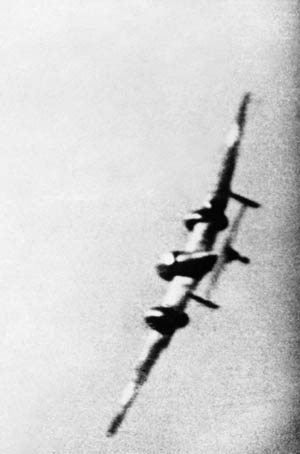
The German commanders, most notably Göring, refused to believe this sophisticated system existed despite the insistence of his pilots that the RAF was always waiting in the right places. This was a massive blunder on his part, costing him precious aircrews and aircraft. Consequently, attacks on radar stations were few during the opening phase of the Battle of Britain, and no effort was made to avoid detection. In reality, the system worked so well that the time from a blip on the radar to a squadron in the air to meet it was six minutes, and the aforementioned climb rates of the Hurricanes and Spitfires put the fighters at 15,000 feet within six minutes of leaving the ground. In effect, it took between 10 and 15 minutes after first spotting the Germans to put together a proper intercept at the point of attack.
On August 8, the Luftwaffe finally attacked coastal radar installations. The attack aroused no suspicions in Fighter Command, however, as it was the only major activity of the month so far. The weather, which had been clear and perfect for flying since May, had been terrible for the first week of August. Had the weather remained conducive for flying, the Luftwaffe would have launched more raids on the radar stations and airfields in southern England. Instead, it granted both sides a much-needed respite, and the British noticed no change in German strategy.
That changed abruptly on August 12, when the weather cleared long enough for a large-scale German attack on radar installations and airfields. Low-level attacks would be used, converting some Bf-110s into fighter-bombers to achieve greater speed. These planes, along with hundreds of level bombers, began their raids at 9 am. The goal of this operation was to knock out the eyes of the British.
The German attacks lasted all day, smashing radar stations in Ventnor, dropping 148 bombs on Manston, and damaging everything in between. Losses for the day totaled 31 German planes shot down to 22 RAF fighters, the latter figure resulting in the loss of 11 pilots. Göring and the leadership of the Luftwaffe believed that the British had been blinded and prepared to launch follow-up raids. Unknown to the Germans, the British worked through the night and repaired the majority of the damage from the day’s raids by the next morning.
Eagle Day
August 13, 1940, known as Adlertag, or Eagle Day, began with a message from Göring to commence a major bombing offensive. Unfortunately, the weather turned sour in the early morning and Göring postponed the attack. However, the postponement order never reached Oberst Johannes Fink, commander of Kampfgeschwader 2, who led his 74 Do-17s to England and attacked Sheerness and Eastchurch just after 7 am, losing five bombers with five more suffering heavy damage.
In the afternoon, the weather broke, and Göring ordered the assault to proceed. By now, Fink’s raid had alerted the British to the aims of the Luftwaffe. As German raiders bombed their targets and clashed with RAF fighters, it became apparent that this was a different tactic than the previous effort against shipping and other targets in the Channel, known as Kanalkampf. When the air action ended on the 13th, a total of 34 German planes and 13 RAF fighters had been shot down.
The attacks resumed with ferocity on August 14. RAF fighters shot down 71 German planes with the loss of 29 fighters. Of the 71, only eight were Bf-109s. Such results reflect British tactical doctrine adopted during the early days of the battle, the targeting of German bombers discussed by Peter Townsend. In an effort to codify this, Dowding allowed Hurricanes to assault the bombers, while Spitfires were tasked with handling the 109s.
This came about from necessity. The Hurricane was a stable gun platform and a ruggedly built fighter, but it was no match for the much faster, nimble 109. The Spitfire, incredibly maneuverable, was to deal with them. Although the 109 could outturn it, the Spitfire had a better chance against the German fighter, creating a rivalry that lasted the duration of the war.
“Harmonizing” the RAF Fighters
In fighter against fighter combat, the Bf-109 was the best in the world in 1940. Its massive advantage lay in its armament. At the time, it was the only single-engine plane to carry cannon, and the E variant prevalent in the Battle of Britain carried one in each wing. These cannon fired exploding shells that could take down a metal-skinned fighter in one or two hits. Of equal importance was the mounting of twin machine guns above the engine, directly in front of the pilot. This meant the guns held an advantage of not needing “harmonization,” the aiming of wing-mounted guns to a convergence point at a certain distance.
Initially, the RAF set harmonization at 600 yards for Hurricanes and Spitfires. At this distance, and because both the shooter and the target were traveling at over 300 mph, planes were incredibly difficult to hit. Also, one must consider the drop of the bullets as they travel that distance and the spread as they begin to lose accuracy. In light of this, many British pilots worked to get close (200-300 yards) before opening fire. The result was many missed opportunities.
A 600-yard harmonization meant that the pilots willing to work in close did not have their guns sighted to fire at this range, and the most destructive point of fire, the convergence or harmonization point, was 400 yards in front of the plane they had worked so hard to line up. Pilots began unofficially realigning their guns to harmonize at 250 yards, which increased the accuracy and effectiveness of RAF fighters.
The Luftwaffe’s Strategic Shift
The attacks on RAF airfields and radar installations continued throughout August and into September. Enraged that the RAF was still operational, Göring cleaned up his units. He fired his older wing commanders in fighter, attack, and bombing Geschwadern, replacing them with young, rising stars. Adolf Galland resisted his appointment as commander of JG 26, while Mölders readily took charge of JG 51. To Göring, the prolonging of the conflict, as it neared two full months, was the result of old men in command who lacked the energy and drive of younger men. It did not change German fortunes, as the RAF shot down more planes than it lost every day from August 26 to September 6.
On the night of August 24, a German bomber lost touch with its formation and dropped its payload on a residential area in the city of London. The following night, Churchill sent 80 bombers to attack Berlin. Indignant, Hitler ordered Göring to avenge this personal insult against German pride. Göring also believed that this would entice the remainder of Fighter Command into the skies for a great climactic battle, which would thoroughly destroy the RAF and completely demoralize the British people. The strategic shift took place on September 7.
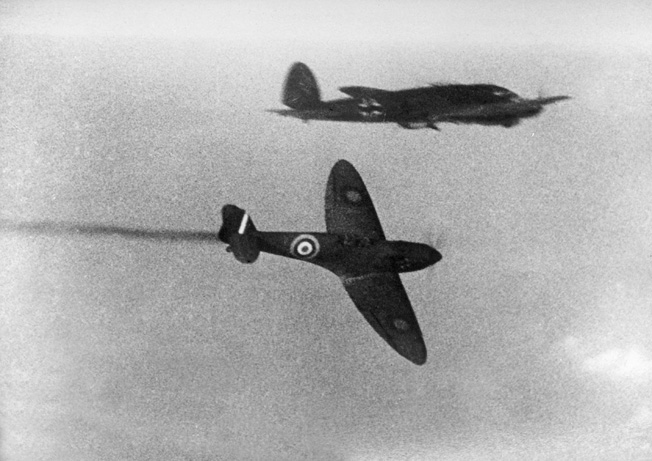
Up to this point in the battle, Fighter Command was inflicting heavy losses on the Germans but was also sustaining losses it could not withstand. By August 24, Dowding had lost 80 percent of his squadron commanders. By September 6, Fighter Command had lost 295 Hurricanes and Spitfires with 171 more damaged, and 103 pilots were killed or missing with a further 128 wounded. The RAF could not sustain operations much longer as the German plan to win a battle of attrition began to succeed. It was the loss of the pilots that was most worrisome as British fighter production offset the battle losses. Due to a combination of poor intelligence, arrogance, and ignorance, Göring believed that the true number of British fighters was about 300 when he launched Adlertag.
On September 7, 1940, the Luftwaffe began attacking London at night. The initial “Blitz” would last for 10 days. Due to lack of onboard radar, RAF fighters were ineffective at night, which cut Luftwaffe losses. Without individual radar systems, the fighters had to be vectored in from the ground. Even then, it was up to a pilot’s ability to see in the dark to spot the enemy planes. The Luftwaffe employment of night bombing in September was undertaken in part to terrorize British citizens and break morale.
The RAF used the week to recover from massive losses and regroup. Weekly losses dropped from nearly 300 planes to less than 150, and the suddenly resurgent RAF quickly began exacting revenge on the Luftwaffe.
“Big Wing”
Coinciding with the German shift in targets was the British switch in tactics. Wing Commander Douglas Bader of 242 Squadron had overcome the loss of both legs to become one of the most famous British aces of the battle. An outspoken, brash man, Bader advocated a strategy he called “Big Wing.” This involved taking at least three squadrons into attacks simultaneously, similar to the German strategy. Dowding and Park both instantly rejected the theory, claiming the wing took too long to assemble into proper formation once airborne. Thus, Leigh-Mallory came to Bader’s aid and chided his peer and superior for their failure to utilize the tactics that held so much potential. Leigh-Mallory gave Bader three squadrons—19, 310, and Bader’s own 242—which became known as the Duxford Wing.
The culmination of the battle came on September 15. Kesselring sent 400 fighters and 100 bombers to London. They had found 300 RAF fighters over southern England, when 200 fighters of the now five-squadron strong Duxford Wing arrived from the north. Although 60 German planes were shot down to the RAF loss of 26, the importance of the clash went beyond the material aspect. German pilots had been told that the RAF was ready for the knockout punch, with Göring restating his belief that England had merely 50 Spitfires remaining. However, Luftwaffe fliers had encountered 500 fighters simultaneously. They did not know that it was a gamble by the RAF, which had scrambled every fighter it could.
Replacing the Masterful Hugh Dowding
The fighting did not end on September 15, although it soon became recognized as the day the Luftwaffe lost the Battle of Britain. As for Operation Sea Lion, the proposed invasion of Britain, Hitler postponed it indefinitely. London would suffer from the Blitz as bombing raids continued throughout October. Historians often cite October 31 as the date on which the actual Battle of Britain concluded. RAF losses were 1,017 planes and 537 pilots in Fighter Command and 248 planes and nearly 1,000 men from Bomber and Coastal Commands. The Luftwaffe lost 1,733 planes and nearly 3,000 crewmen.
After the battle, Hugh Dowding was promptly fired, retiring shortly thereafter. Keith Park was also sacked. They were replaced by Sholto Douglas and Leigh-Mallory, respectively. This represented the shift in British tactics to Big Wing. Dowding was seen as part of the old guard. Bader and Leigh-Mallory had harped on Dowding and Park enough to taint their performances. Leigh-Mallory and Sholto Douglas were seen as more forward thinking. After his retirement, Dowding was made Lord Dowding of Bentley Priory. It was a small token for a man who orchestrated a phenomenally improbable victory during a crucial moment of the war.
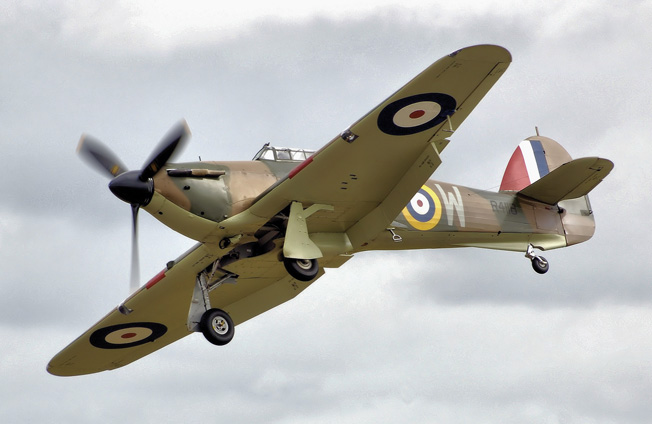
Despite his opposition to Big Wing, Dowding had performed marvelously. His obsessively thorough delegation of orders and control of command and communication channels resulted in the RAF working with precision. The radar system, impeccably organized, worked with clocklike efficiency that even the Germans refused to believe. Dowding also proved masterful with his use of aircraft and pilots. He knew he had limited resources, and he appropriated them wisely. He never let the Germans know exactly how many planes he had, refusing to send up an all-out attack until the Germans did the same on September 15. The result of that action, his greatest bluff, was a decimation of German morale.
Dowding, as a commander, was coolheaded and stoic. He did not panic and commit too much too early, which surely would have cost the British dearly. Dowding’s patience and excellent management of resources, a reflection of his “Stuffy” personality, gave Britain and the RAF every opportunity to triumph. His major mistake was his refusal to accept Big Wing, and to Parliament (thanks to Leigh-Mallory and Bader) it appeared that Big Wing had dealt the decisive blow. While the tactic certainly played a major role in increasing German losses, Dowding’s contributions seem easily forgotten. The reality is that without Hugh Dowding the outcome of the Battle of Britain might well have been dramatically different.
The Luftwaffe’s Strategic Failures
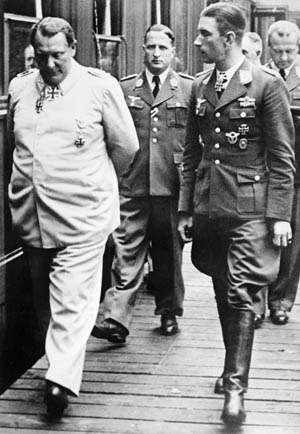
In the Nazi system, Hermann Göring was incapable of accepting blame. Göring failed his subordinates and pilots with a lack of concern and ineffective direction of the battle. He knew about British radar, as he could stand at Calais and see the towers at Dover with his naked eye. Despite being told otherwise by his pilots, he was convinced that his planes could still reach operational areas ahead of the RAF fighters. Failure to properly deal with radar cost Göring the element of surprise and many aircraft.
Göring hopelessly clung to his admiration of the Bf-110, despite the obvious fact that single-engine fighters were vastly superior. Eventually, Bf-110s were escorted by Bf-109s, fighters escorting fighters. This illustrates just how far removed Göring was from the fighting, compared with Keith Park who was flying sorties in his personal Hurricane.
Another mistake the Luftwaffe made was the switch to London as a top-priority target. The Luftwaffe bombing of the British capital and other major cities caused the civilian population to suffer greatly, but it also provided a much needed respite for the rejuvenation of the RAF. It was an impetuous move that allowed the RAF some breathing room.
Innovation and Adaptability Won the Battle of Britain
Meanwhile, the British made tactical judgments that benefited their situation. On the squadron level, RAF pilots began to copy the Finger Four formation used by the Luftwaffe. Pilots, by changing the harmonization points of their machine guns, worked to level the playing field. Catching an enemy plane with a burst at the harmonization point allowed maximum damage with a minimal amount of ammunition expended.
Strategically, the British advantage of radar, conveniently scoffed at by Göring, allowed Dowding to organize an effective response to German incursions. Dowding scrambled appropriate numbers of fighters to deal with each threat, and this enabled him to keep fighters on the ground at the ready for the next wave of German bombers. Radar completely demolished the German element of surprise and gave it to the RAF.
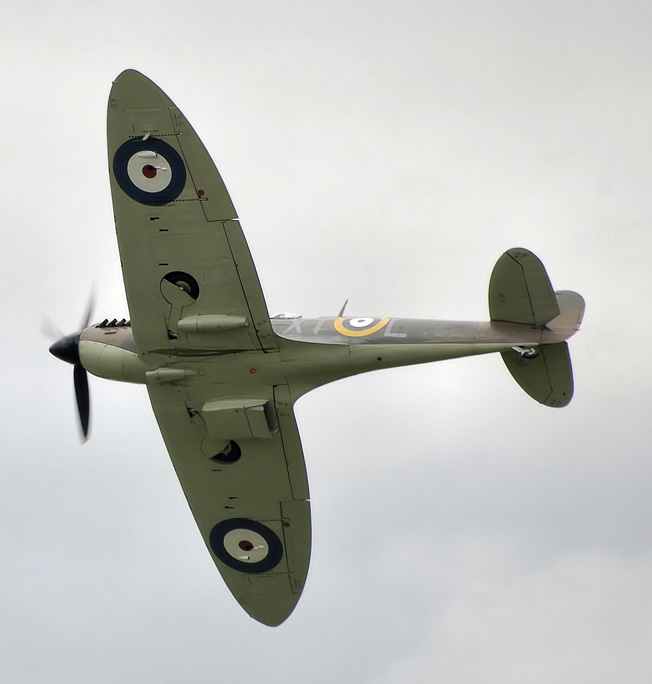
The advantage of radar combined with the excellent climbing characteristics of the Hurricane and Spitfire allowed the British the comfort of being not only in the right spot to intercept, but also at the proper altitude or, if they were lucky, higher. British response tactics were modified by Douglas Bader and Trafford Leigh-Mallory to accommodate the Big Wing theory, which inflicted heavy casualties on the Luftwaffe. Eventually this tactic was adopted as official doctrine.
The Battle of Britain illustrated flaws in the German system and strengths in that of the British, who adapted when they had to. The RAF’s tactical rigidity, which was eventually corrected, was helped by its tremendous strategic pliability. The British were able to adjust on the fly to the conditions presented by each German raid.
The greatest British deficiency was tactical inadequacy, which was overcome with the adoption of Finger Four and Big Wing by the RAF. For the Germans, initial tactical superiority gave the Luftwaffe an edge early in the battle, but strategic flexibility allowed the RAF to survive—its very existence thwarting the German plan.
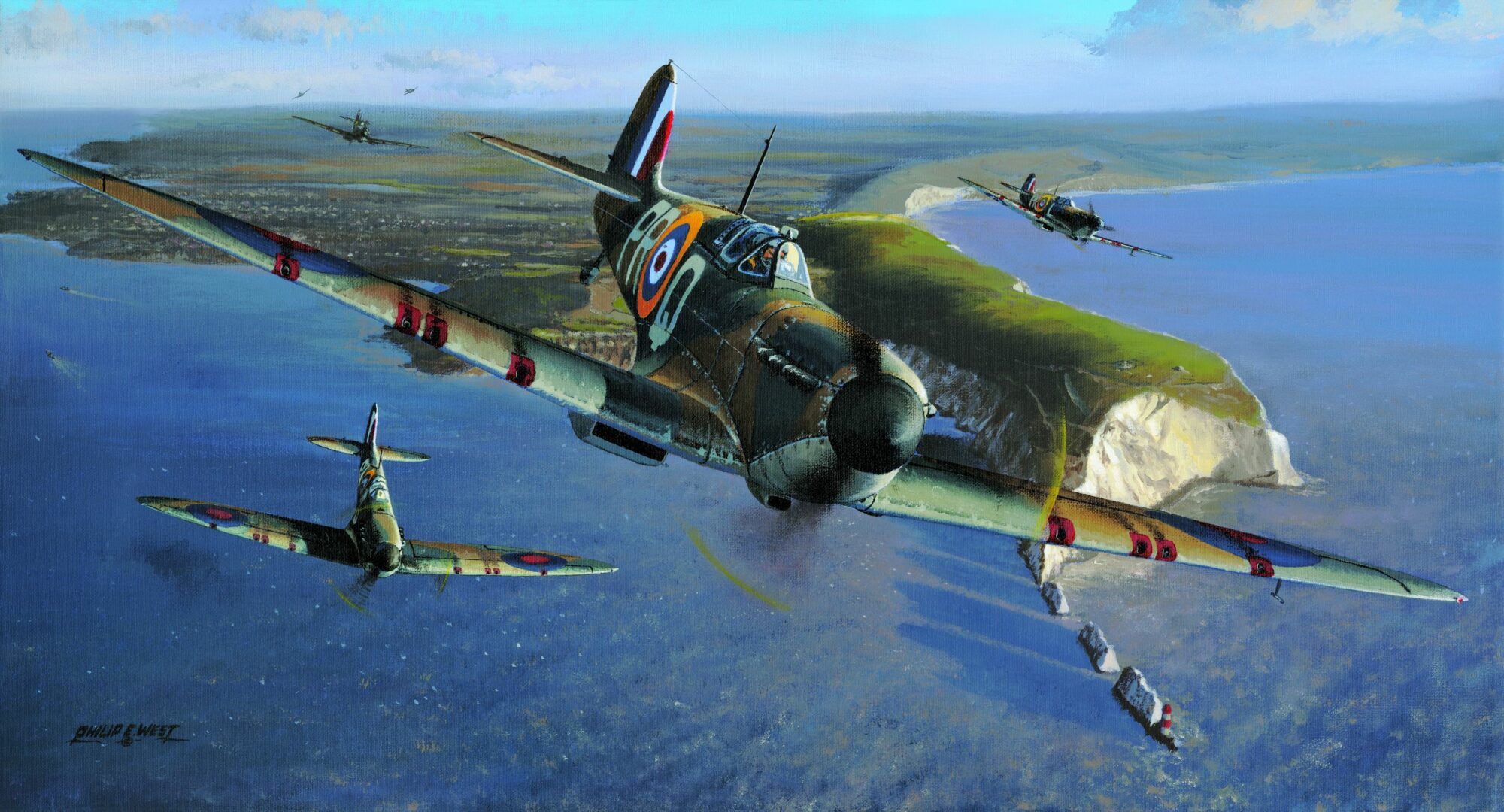
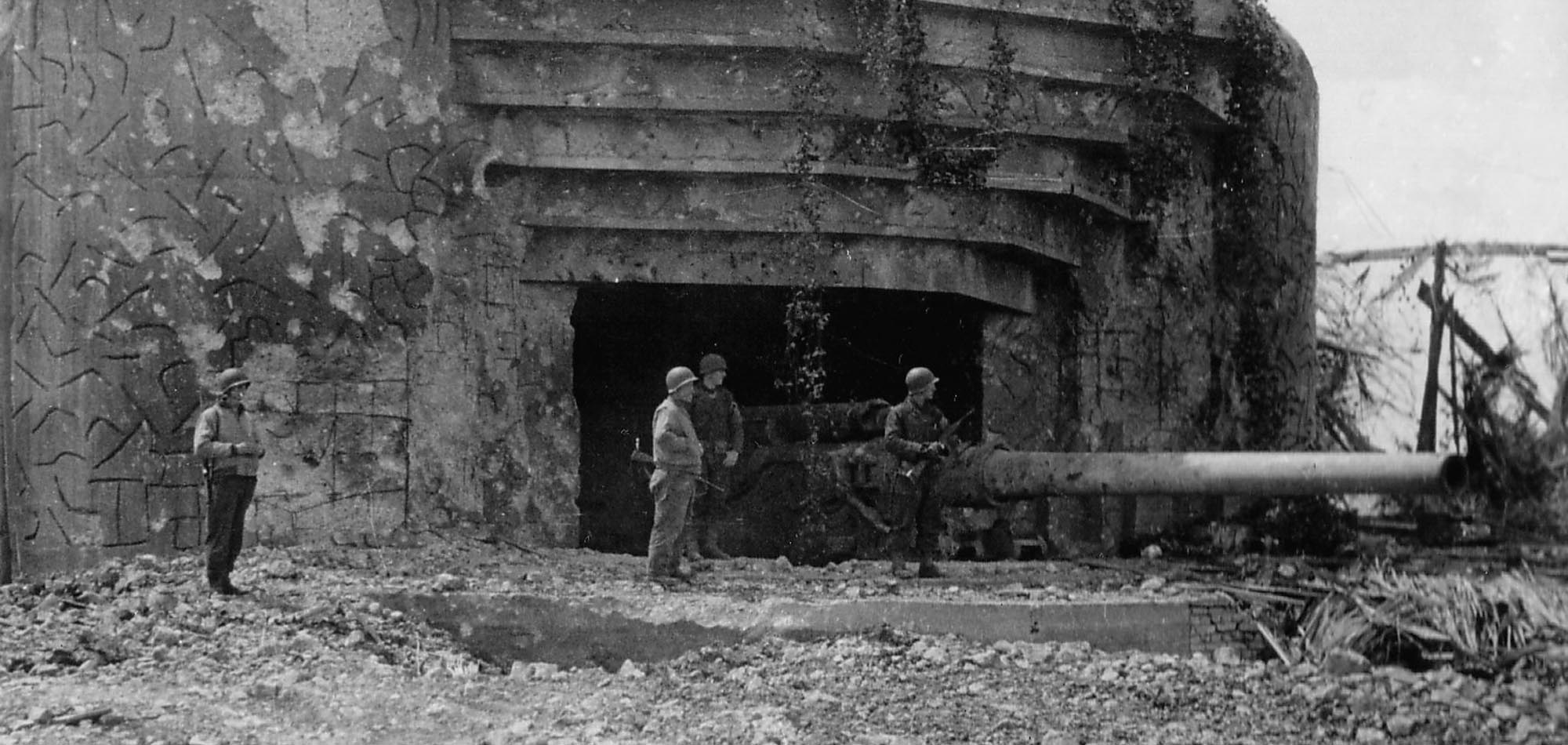
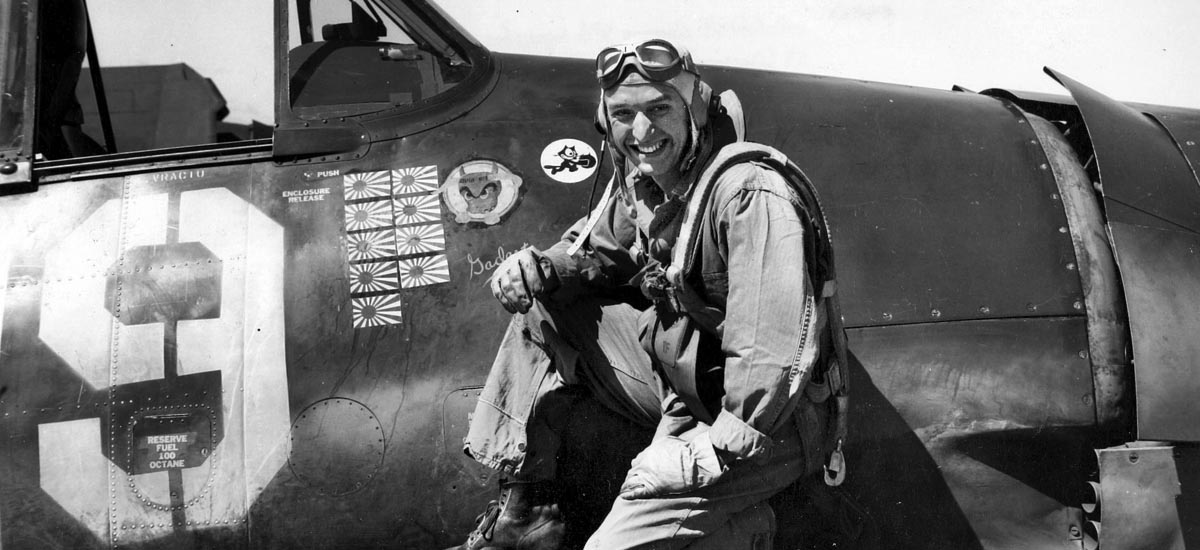
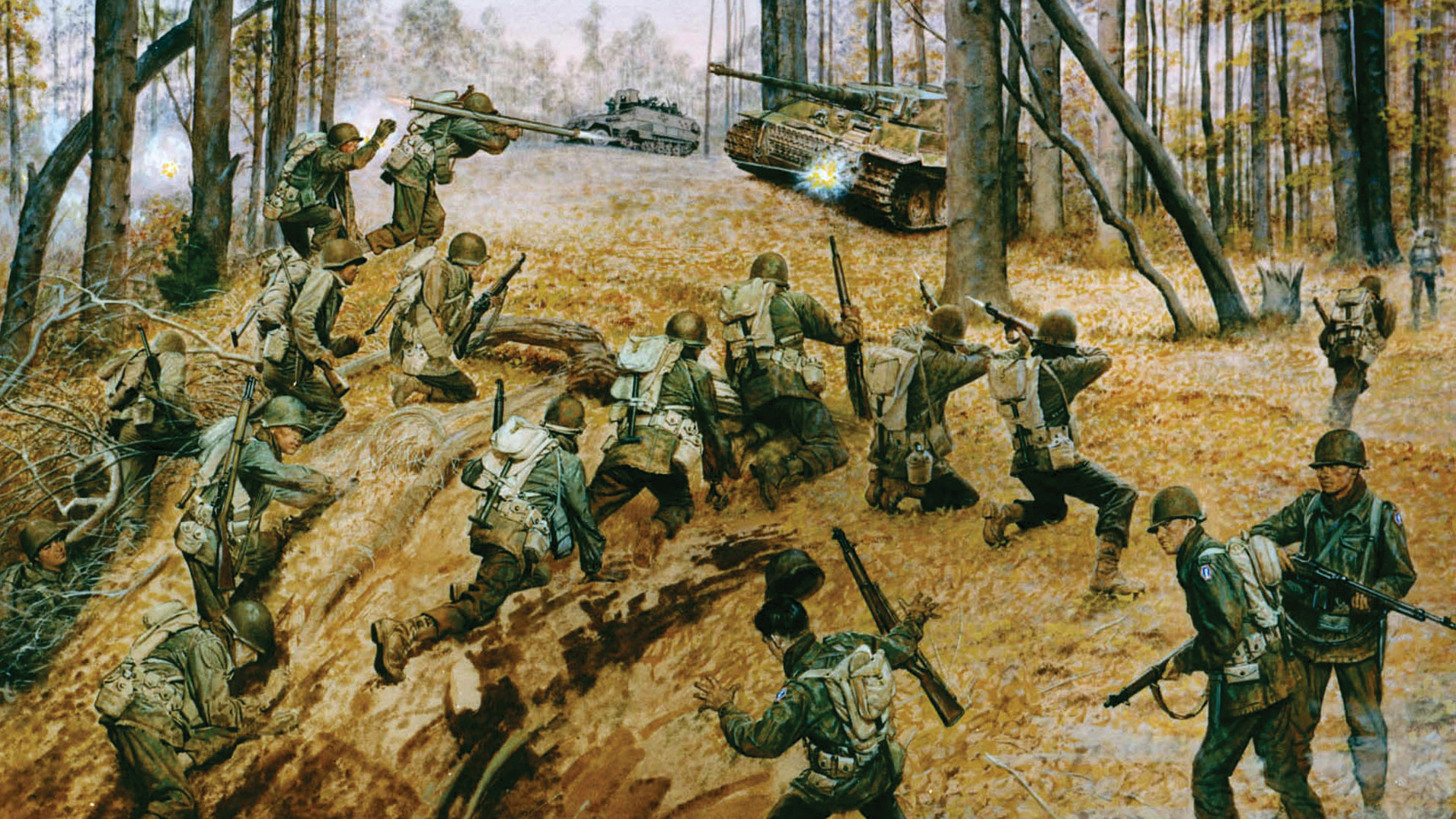
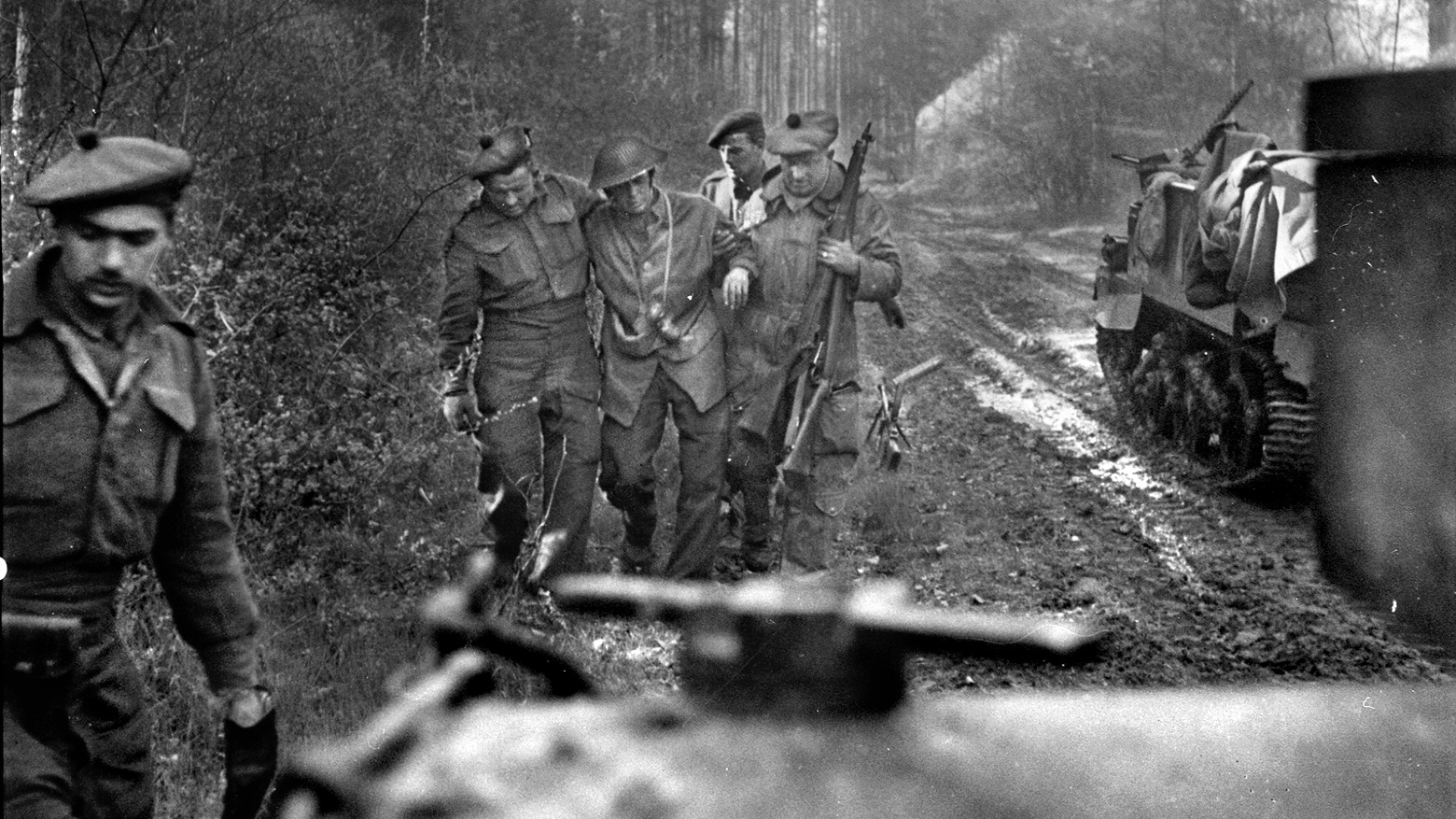
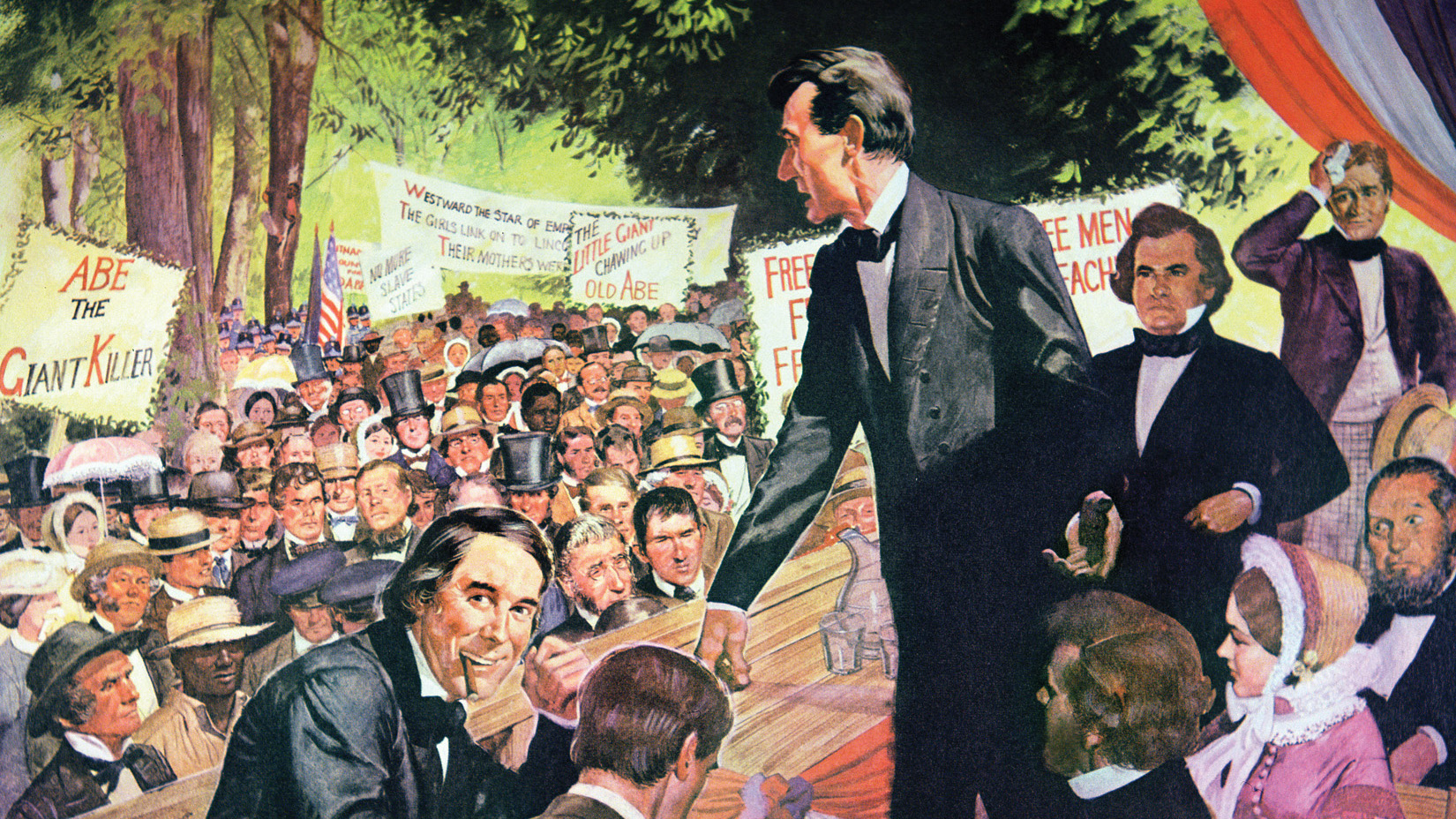
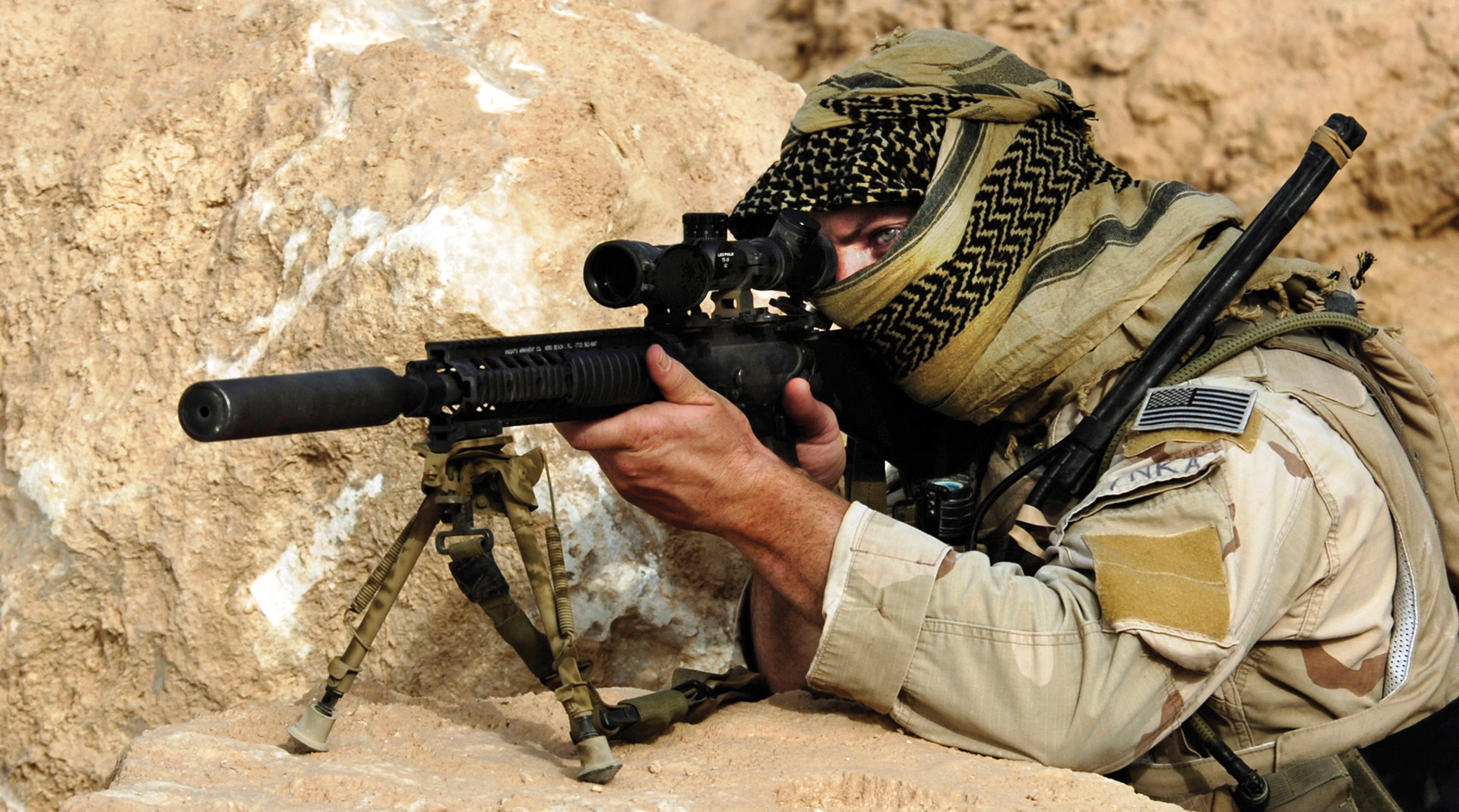
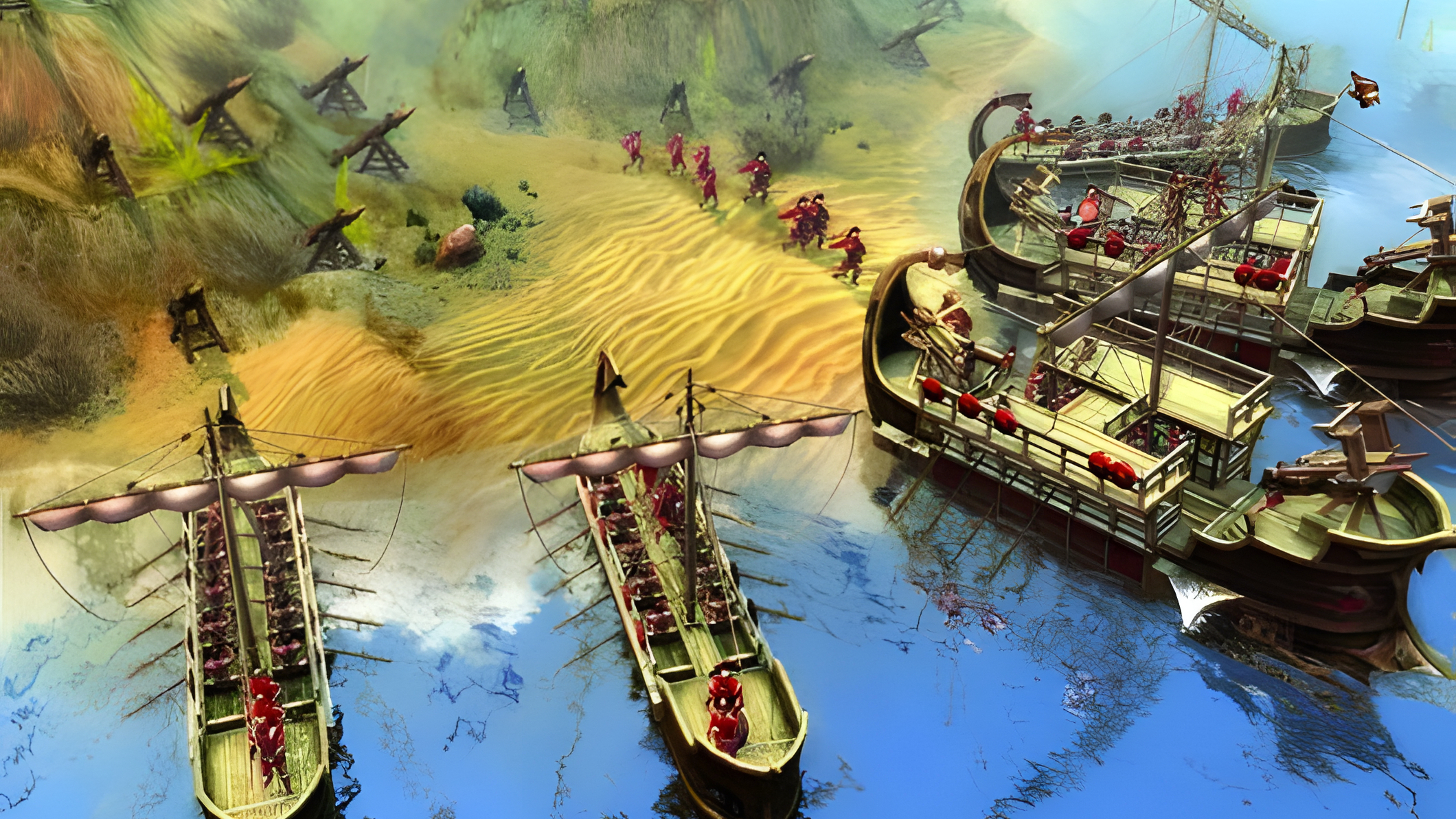
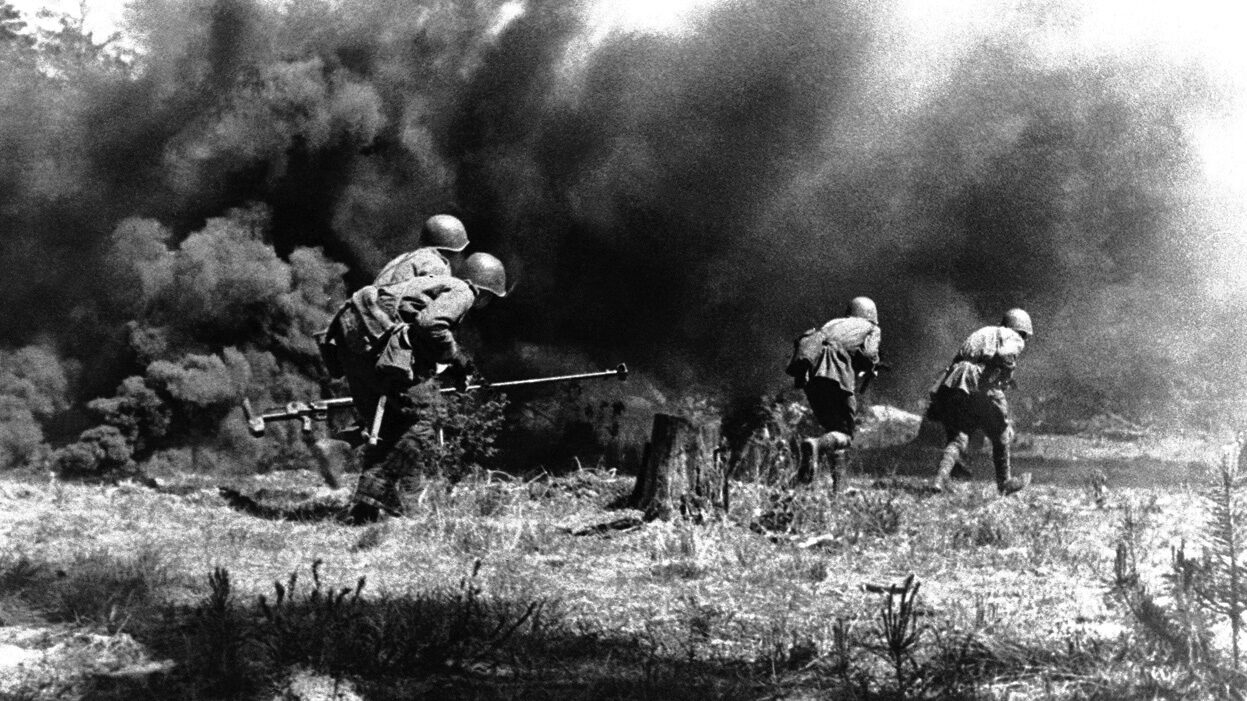
I don’t dispute any of the facts as you have outlined them but there is still much controversy about the “big wing”. It certainly worked well in attacks on London when conditions and time favoured the assembly of a large number of fighters but you would have to wonder about its effectiveness when defending the South East.
It’s biggest effect must have been on the morale of Luftwaffe crews who had been told fighter command was destroyed and were met with hundreds of fighters in waves. It may well have saved RAF pilots’ lives too because they could overwhelm fighter escorts but its overall effect in stopping the bombers from getting through must have been less.
Amazing how the contribution of foreign pilots in the RAF (Poles, Finns, French, etc.) is completely ignored. The top two fighter squadrons in the RAF were Polish. While British pilots were taking off with 20 hours of experience some of the foreign pilots were already aces from encounters over Poland and France in aircraft vastly outmatched by the BF and FW models. Too much watching of the history channel!
An important part of British success in this and other operations was command and political structure. The Churchill administration set the goals and objectives and the military provided the means and tactics. Fortunately for the allies all during the war the German political structure of Hitler and Goring set both goals and tactics which resulted in disasters on many occasions. This incompetence by a former Corporal and an addicted ex- pilot reflected the same types of problems as an unhinged Kaiser and politically ignorant Czar had in WW I. Result was essentially the same.
The American Eagle Squadron had a significant impact on knocking down Luftwaffe bombers and fighters. They assisted the RAF in a time when the RAF was in significant trouble with loss of pilots.
Only 1218 Luftwaffe aircraft were shot down during daylight and few (around 3) during night in July-October 1940 period for the battle loss of 1140 Cat.3 fighters. Thats really bad result. When you consider severely damaged aircraft, RAF FC performance was quite weak and result passive with 1850 Cat.3 and Cat.2 battle casualties. During the same period Luftwaffe lost 1385 aircraft destroyed by enemy action, so including air gunners and A.A. fire of all kind. Nobody is focusing on those numbers, even if they are known to experts for long time.
During July 1940 RAF FC lost 133 Cat.3 fighter (battle casualties) officially.
The Morale to this story is how great Man are overshadowed by Man of lesser value. Hugh Dowding greatness was not even his performance during the Battle of Britain but the fact that his vision and determination coupled with his Tactics gave Britain the tools to confront the Germans face to face instead of been wiped out and having the British skies opened to the Germans to do as they pleased. Dowding worked for years building the Tactics and infrastructure including that most important element the Radar and how to use it. He faced the same treatment as Bomber Harris to be thrown into the Garbage heap while lesser Man received the honor that was due to them. However, these were great Men and their first concern was for their country and their Men and Women that served alongside them. It is ironic that the mistreatment of both of these Men was under the same shadow and that is of Winston Churchill that himself had suffered the same treatment more than once in his political career.